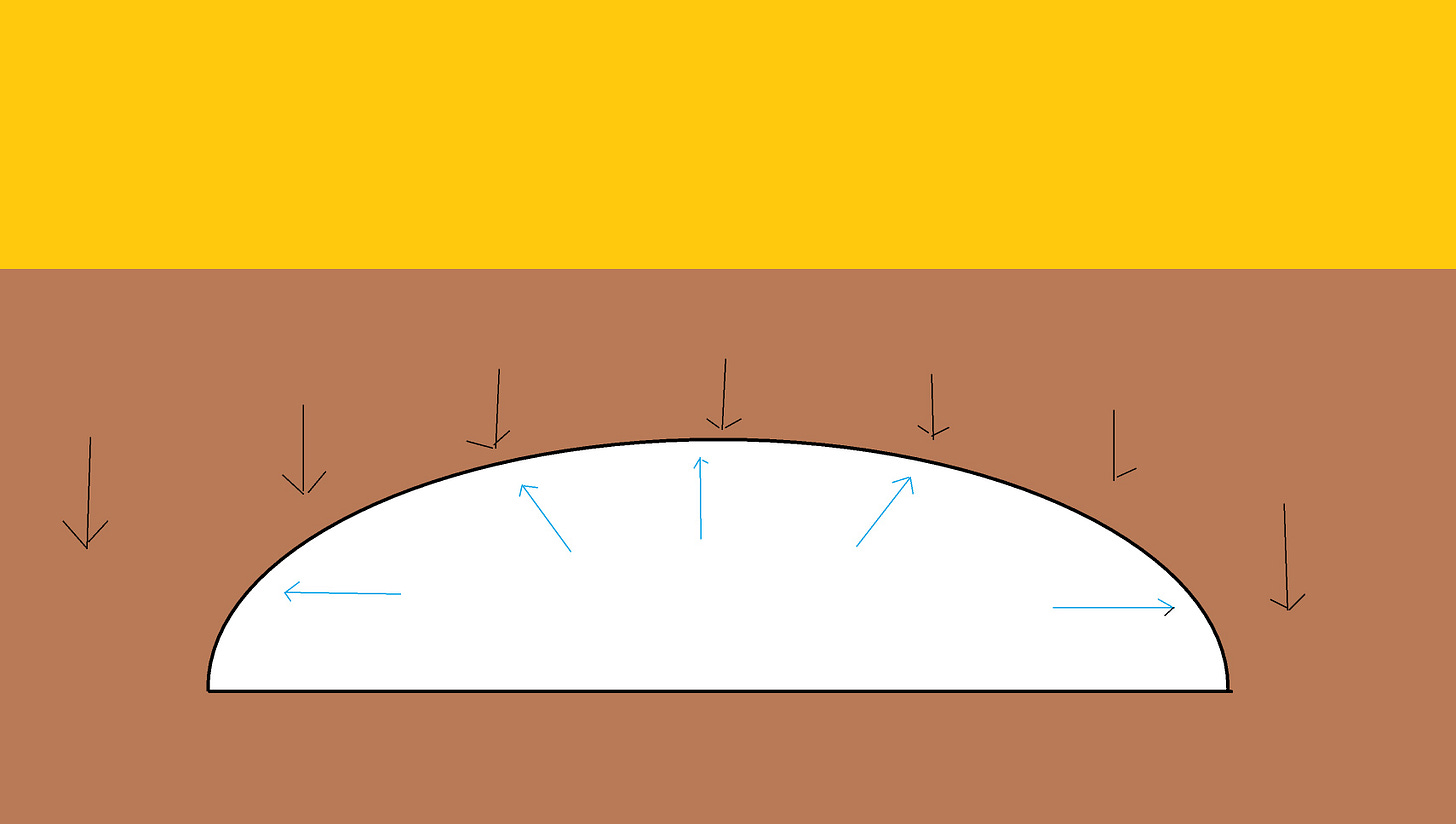A simple explanation of why colonies on Mars will be underground
Here is a quick look at factor that will dominate building on Mars.
You see a lot of images from people all over social media of just what they think a Mars colony will look like: Glass domes, 3D printed buildings of every possible shape, and more. You might get a tiny bit of that on the surface, but most of the colony buildings are going to be buried under thousands of tons of sand, and more than likely largely made of bricks.
The First factor favoring that is radiation. On Earth you have 10,000 KG of matter per square meter over your head between you and all that radiation coming in from the sun and space. Anything less than that and your rates of cancer start climbing, and the longer your exposure to less, the higher your risk. The cheapest and easiest way to get that level of protection from radiation is by putting a minimum of ten tons of sand over every square meter of any place you or any living thing spend time. That radiation means that domes and surface buildings will be places you will visit, not live.
Then there is pressure and how much is cost to contain that. The air pressure inside a colony will also be 10 tons per square meter since trying to do it with less makes it too flammable, among other problems. Holding that much pressure in is very expensive. Further, most materials used in pressure vessels fatigue and have to be replaced often. They are very prone to catastrophic failure. That is a factor in why the ISS needs to be deorbited soon.
But a cheap, long-lasting way of holding pressure was invented thousands of years ago; a brick wall with dirt piled on it. This means has been used to build dams holding back that much pressure the world over with little to no fatigue. Even the risk of catastrophic failure is greatly reduced, and takes exactly the right circumstances, including a leak forming, not being repaired and slowly eroding the sand from behind the wall.
But because of the gravity of Mars, 10 tons of mass per meter isn’t going to be enough to offset that pressure. At one third of the gravity, you are going to need closer to 30 tons of mass on top of you. This gives you the same pressure pressing in on your structure as the air pressing out, so adding a bit more is even better. Burying it is rather cheap, provided you have the energy available, and you have brought in large enough equipment/
Buried domes and vault tunnels have many strong engineering reasons for using them. But no matter what you make them out of, you will have to build an infrastructure to make your construction materials. The lowest cost, most productive, easiest to maintain infrastructure for building materials is a compression brick works. I have doubts that anything else come anywhere near as cheap per square meter of wall as building it out of brick will. You need a lot of building and tunnel and need to make ever dollar invested in building get you the most that you can. We also have thousands of years of experience building domes and tunnels out of bricks and are getting experience in many major cities having robots build us brick walls.
All of these factors add up to pressure sealed building made of bricks, buried under 30 plus meters of sand being the most economical, safe way of living there.





Not really. Too many people living like that in several massive buildings in some Asian cities and doing just fine. When you have depression, it has other causes, those causes you to retreat from doing things, "Staying in" is an effect, not a cause. It is the pulling away and cutting yourself off, that does that damage. The way people tend to do that is to find a place that they don't have to leave. I have had personal in depth experience with this. It isn't getting outside that so much help. It is going to where others people are, and connecting with them.
The psychologicaal effects of living underground could potentially undo the many benefits it brings. Living on Mars is going to be tough. Colonists will need all the mental health they can find as they already struggle with lack of open spaces, breathing fresh air, sunlight to sustain biological processes, and bone muscle and nervous health issues from low gravity.
But even if living underground proves prohibitive, anything that isn't a residence might still be buried, with colonists going home after work to their above-ground abodes.